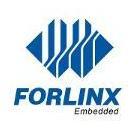Search the Community
Showing results for tags 'access control systems'.
-
Edge Computing Access Screen is designed to provide an edge computing-based solution for access control systems. It can realize face recognition, data processing, fingerprint recognition and other functions, and improve the security and convenience of the access control system. In terms of application scenarios, intelligent monitoring and access control system is an important part of intelligent building security. The application of edge computing technology can increase the monitoring effect and response speed, avoid the security risks in the process of data transmission, and protect the privacy of users. Edge computing devices can process authentication faster and improve the response speed and security of access control systems. Hardware requirements for edge computing access control screen (1) Processor Select a high-performance and low-power embedded processor, the processor itself needs to come with arithmetic power to meet the needs of edge computing. (2) Memory Configure appropriate memory and flash for system and application data. (3) Interface Provide necessary interfaces between the carrier board and other devices, such as GPIO, UART, I2C, SPI, etc. (4) Communication module Support Wi-Fi or 4G to facilitate data transmission with the cloud platform. (5) Sensor Integrate multiple sensors, such as face recognition, fingerprint recognition, and RF card reader. Edge Computing Access Control Screen Design The FET3568-C SoM is recommended to be used as the hardware platform of edge computing access control screen. The system on module has a quad-core ARM Cortex-A55 processor with a main frequency of 2.0 GHz, and its own NPU has a computing power of 1TOPS, which can meet the needs of lightweight edge computing tasks. Memory: FET3568-C SoM supports LPDDR4 and eMMC storage, and can be configured with appropriate memory and flash memory to meet the needs of the access control system. Interface: Native GPIO, UART, I2C, SPI, Gigabit port, etc. can communicate with other lines. Communication module: FET3568-C supports wireless communication technologies such as Wi-Fi, Bluetooth, and GPS. The appropriate communication module can be selected according to the requirements. Sensors: FET3568-C supports multiple sensor interfaces, such as GPIO, I2C, SPI, etc., and can easily integrate multiple sensors, including face recognition, fingerprint recognition modules, etc. Power supply module: According to the requirements of the access control system, the appropriate power supply chip can be selected to provide stable and reliable power supply for the entire carrier board. Peripheral expansion: USB and SD card slots are convenient for secondary development and function expansion.
-
- rk3568 som
- edge computing access screen
- (and 2 more)

